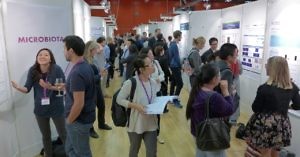BSB Q&A on IMDZ and 1L NSCLC
 With so much data to cover recently, we haven’t have time for a perennial favourite, the monthly mailbag to answer BSB reader Q&A on hot oncology topics.
With so much data to cover recently, we haven’t have time for a perennial favourite, the monthly mailbag to answer BSB reader Q&A on hot oncology topics.
October has brought out quite a lot of controversy to consider, most of it happening in the last week!
Here, we consider questions on Immune Design’s phase 3 trial with their NY-ESO-1 vaccine, CMB305, which attracted both a lot of market attention and also questions from readers.
We also review a bunch of questions relating to 1L NSCLC and the upcoming readouts. This niche is probably potentially one of the most competitive spaces in oncology R&D at present and readers seem almost insatiable for information on this topic.
It is quite a turnaround considering the last decade of numerous failed trials or even non-inferiority studies that were being conducted.
Like many readers, I can well remember sitting in freezing cold, half empty halls wondering if the latest chemo or targeted therapy doublet was going to offer a mere 2-3 months improvement in PFS and no OS benefit or not. It was that binary and also depressing.
With the possibilities offered by immune checkpoint blockade, in a short space of time 1L NSCLC has gone from graveyard to uber intense with several companies vying to demonstrate improvements in overall survival by 6 months or more.
There’s a lot more to come here and not all of the lung trials will be positive – that’s expecting too much against the game of chance. Here, we look at numerous factors that could make a difference, both positive and negative.
To learn more insights on this intriguing topic, subscribers can log-in or you can click to gain access to BSB Premium Content.
This content is restricted to subscribers
 We’ve seen several oncogenic escape mechanisms reported, included activation of the JAK/STAT pathways in some patients and loss of existing immunity when the tumour suddenly becomes cold or an immune dessert.
We’ve seen several oncogenic escape mechanisms reported, included activation of the JAK/STAT pathways in some patients and loss of existing immunity when the tumour suddenly becomes cold or an immune dessert.

 With this in mind, the annual meeting of the
With this in mind, the annual meeting of the  It’s also not something that we have covered extensively here on BSB, so looking at something in a different light is often a good idea since insights and intelligence can sometimes jump out afresh.
It’s also not something that we have covered extensively here on BSB, so looking at something in a different light is often a good idea since insights and intelligence can sometimes jump out afresh.
 This is the third in our mini-series previewing the forthcoming European Society for Medical Oncology 2016 Congress in Copenhagen (Twitter #ESMO16).
This is the third in our mini-series previewing the forthcoming European Society for Medical Oncology 2016 Congress in Copenhagen (Twitter #ESMO16). If you are sitting on the fence as to whether you should go to Copenhagen, then hopefully our series of Previews will help you decide.
If you are sitting on the fence as to whether you should go to Copenhagen, then hopefully our series of Previews will help you decide.